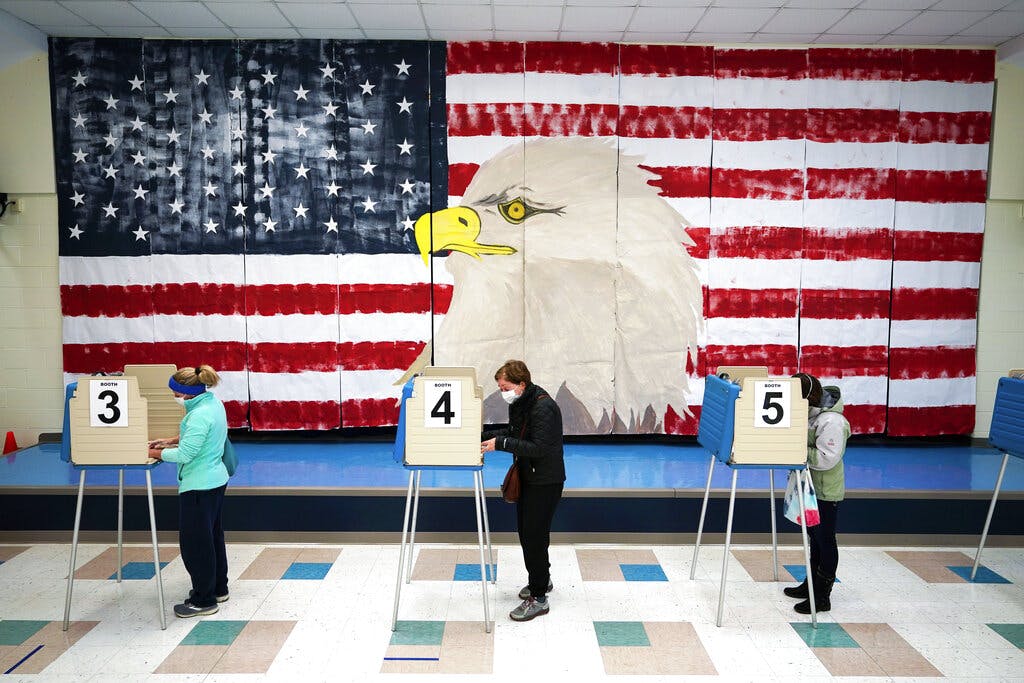High Court Decision Shores Up Voting Rights Act, Orders Alabama To Redraw Congressional Map
The decision hands House Democrats a ‘safe’ seat in deep-red Alabama and could throw redistricting battles under way in several other states into turmoil.

In a surprise 5-4 ruling that saw two conservative justices join their liberal counterparts in the majority, the Supreme Court ordered the state of Alabama to redraw its congressional maps to create a second majority-Black district.
Chief Justice Roberts and Justice Brett Kavanaugh joined Justices Sonia Sotomayor, Elena Kagan, and Ketanji BrownJackson in a decision that found Alabama’s Republican-drawn congressional map — with one majority-Black district out of seven in a state where more than a quarter of residents are Black — violates the Voting Rights Act. The decision was to uphold a lower court ruling on the issue.
The case, Allen v. Milligan, had been monitored closely because of its potential to give the conservative court a chance to water down the landmark 1965 Voting Rights Act, which prohibits racial discrimination in voting. The court allowed the congressional map to be used in last year’s elections despite the challenge, and the judges seemed inclined during arguments in the case in October to restrict the use of the act to challenge redistricting plans as racially discriminatory.
The decision hands House Democrats a “safe” seat in deep-red Alabama and could throw redistricting battles under way in several other states into turmoil. GOP-drawn maps in Louisiana, Florida, South Carolina, and Georgia could come under renewed scrutiny in light of the decision and force the states to create more Democratic-friendly districts with majority-Black voter bases. Gerrymandered maps in New York and Wisconsin could also be affected.
The House minority leader, Congressman Hakeem Jefferies, called the decision an “affirmation that the Voting Rights Act is the law of the land and it is illegal to engage in race-based gerrymandering. It’s clear that the Alabama legislature engaged in race-based gerrymandering, and they are not the only ones throughout the country.”
Last year, Justice Roberts signaled that he was open to re-examining the way courts weigh discrimination claims under the part of the law known as section 2 and joined high-court majorities in 2013 and 2021 that made it harder for minorities to use the Voting Rights Act to make discrimination claims.
In the majority opinion, Justice Roberts said there are legitimate concerns that the Voting Rights Act “may impermissibly elevate race in the allocation of political power within the states,” but added: “Our opinion today does not diminish or disregard these concerns. It simply holds that a faithful application of our precedents and a fair reading of the record before us do not bear them out here.”
The four dissenting voices, led by Justice Thomas, wrote that the decision forces Alabama “to intentionally redraw its longstanding congressional districts so that black voters can control a number of seats roughly proportional to the black share of the State’s population. Section 2 demands no such thing, and, if it did, the Constitution would not permit it.” Justice Samuel Alito, in his dissent, said the court’s decision “unnecessarily sets the VRA on a perilous and unfortunate path.”
The case dates back to 2021, when the Alabama state legislature redrew the state’s congressional map in light of the 2020 Census. The redrawn map left a single district with a majority-Black voting base that has consistently voted Democratic. Advocacy groups sued to block the new map, and a three-judge panel of the federal District Court in Alabama sided with the plaintiffs and ordered the legislature to redraw the map to include a second district “in which Black voters either comprise a voting-age majority or something quite close to it.”
The district court panel, which included two judges appointed by President Trump, concluded that the existing map likely violated the Voting Rights Act by concentrating Black voters in one district and spreading them out among the six others in a manner that diluted the votes of Black residents. Alabama argued that it was taking a “race neutral” approach in the redistricting.
In the decision, Justice Kavanaugh rejected the idea that courts should rely on race-blind computer simulations when attempting to determine whether discrimination has occurred. He also rejected the argument that requiring race-based redistricting violates the Constitution.

